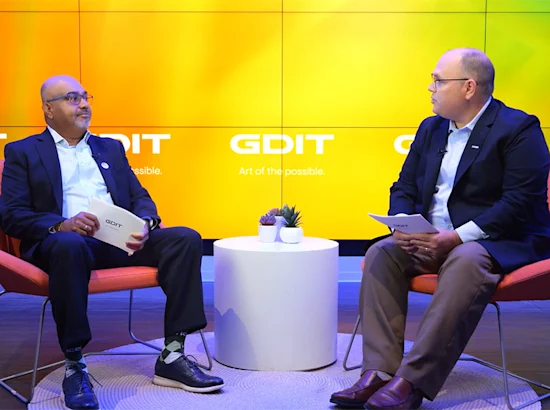In 2023, artificial intelligence transformed a host of industries and tasks. This was the year of generative AI, ChatGPT and Dall-E. It was the year companies like Google and Microsoft more aggressively integrated AI into their flagship, consumer-facing products. AI was applied to healthcare, drug discovery and more. And ethical AI, quantum AI, and AI frameworks and standards all came to the forefront of the AI conversation.
The AI transformation is at its very earliest beginnings having its very earliest impacts. I recently sat down with my colleagues for a discussion about their AI predictions for 2024. It’s clear from our conversation that in the months ahead – from reducing administrative burden to automation and data integration – AI will continue to shape a variety of agency missions in incredibly important ways.
Matt Hayden, GDIT’s Vice President, Cyber & Emerging Threats, Intelligence & Homeland Security Division, predicted:
The continued deployment of image classification, detection, and processing tools for homeland security and intelligence.
More use of generative AI to generate and test code, dramatically speeding up software development cycles and enabling developers to dedicate more attention to complex development projects.
The use of AI for full-spectrum cybersecurity capabilities – from detecting phishing to using AI to scale traditional defensive cyber techniques.
Predictions from Brandon Bean, GDIT’s AI and Machine Learning Lead, Defense Division, included:
Greater use of automation to reduce the warfighter’s administrative workload; the use of predictive AI for things like maintenance and inventory; and the use of generative AI to leverage operational data to leverage for trainings and battlefield simulations that model for future conflicts and predict adversarial capabilities.
AI to support the Combined Joint All Domain Command & Control (CJADC-2) initiative and provide the ability to connect with mission partners in a secure and agile manner.
The integration of AI across core systems, including back office systems, systems that support the warfighter, as well as battlefield facing systems.
Colleen Kummet, Ph.D., Director, Health Analytics, Federal Health, GDIT predicted:
AI to drive down the cost of healthcare by addressing and reducing costs across the healthcare system, freeing up doctors to provide more patient care versus the administrative burden that is a part of their day.
Greater use of AI-assisted diagnostic tools that use image analysis, such as in dermatology and radiology, to spot issues faster and earlier in their progression.
The use of generative AI to diagnose very complex conditions, such as those in the mental health space that require in-depth patient behavior analysis and can be subjective.
The use of AI to securely mine, transmit and unify health data to examine traditional structured data, unstructured provider data, electronic health records and patients’ own fitness watches and trackers to better and more holistically manage their care.
AI to reduce time from research to clinical implementation. Leveraging AI to, for example, assess clinical trial data on the safety and efficacy of drugs will accelerate the speed at which therapies move from research into clinical practice.
Without question, 2024 promises to be an incredibly important year when it comes to agencies and their mission partners’ embrace and acceleration of AI. I look forward to what’s to come and can only imagine what our predictions for 2025 might look like.






